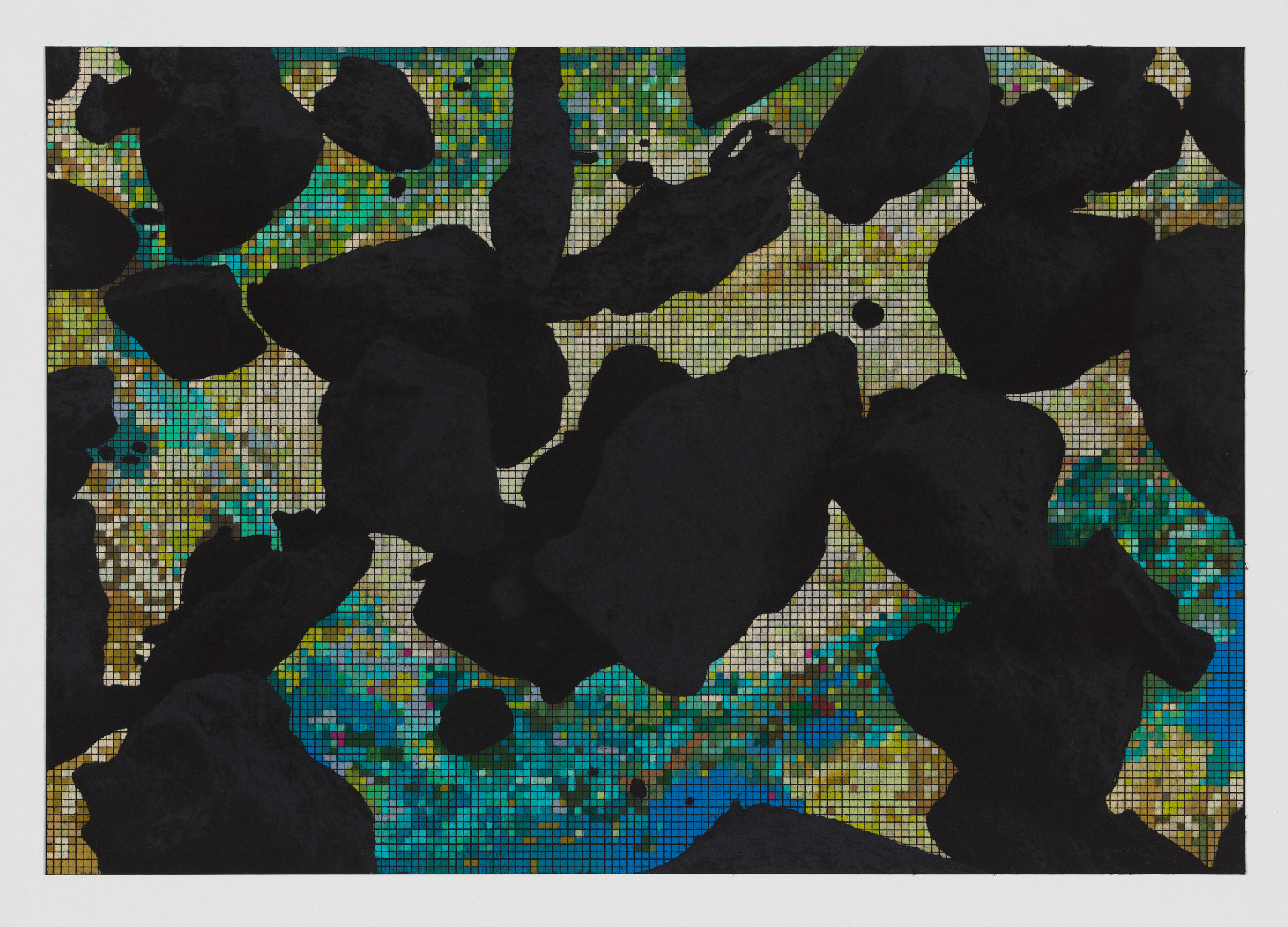Not on view
Date
2022
Classification
Drawings
Medium
Colored pencil on laser-etched paper
Dimensions
Overall: 12 1/4 × 17 5/8in. (31.1 × 44.8 cm)
Accession number
2023.32.2
Credit line
Whitney Museum of American Art, New York; purchase, with funds from the Drawing and Print Committee
Rights and reproductions
© Frances Gallardo
Audio
-
Frances Gallardo, obras de Aerosoles, 2021–22
In no existe un mundo poshuracán: Puerto Rican Art in the Wake of Hurricane Maria (Spanish)
0:00
Frances Gallardo, obras de Aerosoles, 2021–22
0:00
Narrador: La serie “Aerosoles” de Frances Gallardo surgió de su fascinación por la meteorología de Puerto Rico.
Frances Gallardo: Exploré el fenómeno del huracán durante muchos, muchos años y de diversas formas. Inevitablemente, empecé a descubrir y a interesarme por el polvo del Sahara, porque el polvo crea una especie de danza con los huracanes. Todos estos aerosoles, toda la sal, todo lo que está en la atmósfera se encuentra en una danza constante, en una relación constante, ¿verdad? Los huracanes arrastran las tormentas de arena que se desplazan por el océano Atlántico hacia el Caribe.
Todos los minerales que las tormentas de polvo del Sahara esparcen pueden multiplicar la luz. Así, el sol se ve 20 veces más grande, y esto cambia el paisaje. Es como un color muy saturado: florido, con verdes. Por eso me interesaba mucho la yuxtaposición de paisajes. Y también me daba una sensación democrática: así como los huracanes toman el calor, el agua y lo que sea de las diferentes fronteras políticas, al polvo del Sahara tampoco le importan las fronteras políticas.
Narrador: Gallardo tomó una muestra del polvo del Sahara en Santurce, un barrio de San Juan. La llevó al Laboratorio de Nanotecnología Textil de la Universidad de Cornell, en Ithaca. Allí procesaron la muestra con un microscopio electrónico de barrido de emisiones de campo y, a partir de la imagen obtenida, Gallardo creó un grabado térmico.
Frances Gallardo: Se procesó la pequeña muestra con el microscopio electrónico de barrido de emisiones de campo.
El grabado crea relieves en el papel; cuanto más oscura es la sombra, más profundo es el valle. Luego modifiqué las imágenes digitales con un programa, borré el fondo y lo reemplacé con cuadrículas de diferentes estilos y tamaños, que pinté a mano con distintas gradaciones para transmitir el movimiento de la profundidad y la suspensión. Para mí, estas imágenes no solo hablan de lo que es invisible en el paisaje, sino también de las emociones invisibles de la vida en un clima cambiante.
-
Frances Gallardo, works from Aerosoles (Aerosols), 2021–22
In no existe un mundo poshuracán: Puerto Rican Art in the Wake of Hurricane Maria
0:00
Frances Gallardo, works from Aerosoles (Aerosols), 2021–22
0:00
Narrator: Frances Gallardo’s “Aerosol Series” came out of her fascination with the meteorology of Puerto Rico.
Frances Gallardo: I explored the phenomenon of the hurricane for many, many years in many ways. I inevitably came to know and to get interested in the Sahara dust because the dust is kind of in a dance with hurricanes, right? All of these aerosols, all of the salt, everything that is in the atmosphere is in a constant dance, is in constant relationship, right? Hurricanes drag the sand storms that travel in the Atlantic ocean toward the Caribbean.
All of the minerals that the Sahara dust storms carry actually multiply the light. So the sun looks twenty times the size. It changes the landscape. It's like a very saturated color: flowers, greens. So I was really interested in this juxtaposition of landscapes. And also the democratic feel of it, the same way hurricanes take heats and water and anything from different political boundaries—the same way the Sahara dust also does not care about political boundaries.
Narrator: Gallardo collected a sample of the Sahara dust in Santurce, a neighborhood in San Juan. She brought it to the Textiles Nanotechnology Lab at Cornell University in Ithaca. They processed the sample with a field emissions scanning electron microscope, and Gallardo created a heat etching of the resulting image.
Frances Gallardo: They processed the small sample with the field emissions scanning electron microscope.
The etching creates reliefs in the paper: the darker the shadow, the deeper the valley. I then manipulated the digital images with software by erasing the background and replacing it with grids of many styles and sizes, which I hand colored with gradations to convey depth movement and suspension. For me, not only do these images speak about the invisible in the landscape, but the invisible emotions of life in the changing climate.

